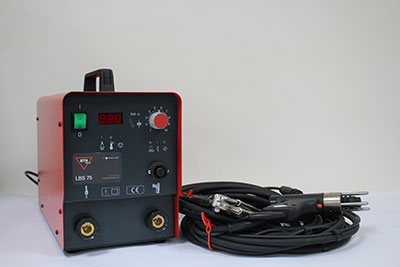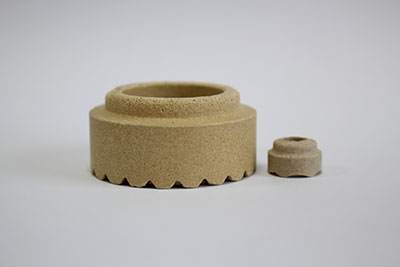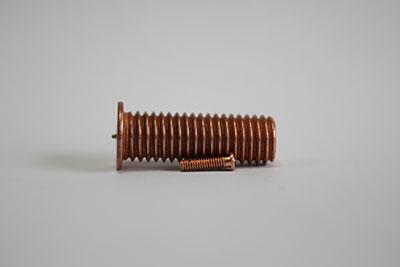How it works:
In C.D studwelding, the welding energy is obtained from a bank of capacitors which have previously been charged to the voltage selected for the particular application. This energy is discharged through the stud itself, giving a high density current which the welding current continues to flow in the form of an arc. Pressure from the return spring in the welding tool now forces the stud onto the work piece, completing the weld.
The welding of fasteners to light gauge metals demands a system which minimises the depth of penetration of the weld. A number of studwelding equipment manufacture have developed capacitor discharge equipment for this purpose and there has been increasingly application in almost every field of light engineering , in many cases providing a spectacular cost saving over alternative production processes.
Employing a weld time cycle of less than one hundredth of a second so that the end of the stud re melted results in a shallow but nonetheless strong weld. Consistant results are obtained in a wide range of materials, even on very light gauge sheet low carbon and stainless steels down to 26 gauge. In most cases, the reverse face can be pre-finished by painting, plastic coating, planting or anodising, before welding – without concern for heat damage.



